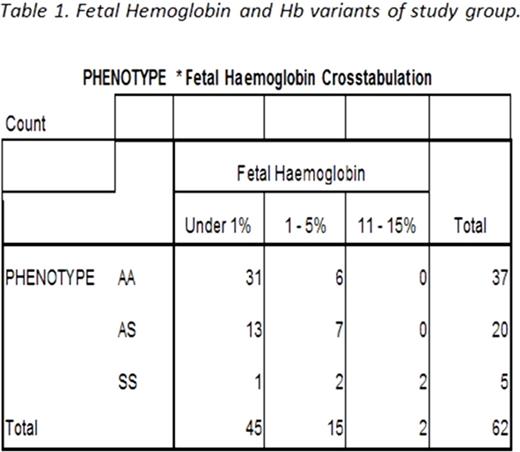Abstract
BACKGROUND: Hemoglobinopathy is the commonest genetic defect worldwide and sub-Saharan Africa bears the second largest burden of this disorder. The challenges confronting management of hemoglobinopathy in resource-limited settings in Africa are diagnosis, monitoring and prognostication. The old conventional hemoglobin protein electrophoresis test (HbPE) lacks the capacity to make definitive diagnosis of hemoglobin variants (genotype) of an individual, hence, so many diagnosis of hemoglobinopathy have been missed as a result of this defect. This necessitated the need for more reliable technique for screening, diagnosis, monitoring and evaluation of Hemoglobinopathy (High Performance Liquid Chromatography,(HPLC)).
AIMS: This study aimed to compare the old conventional HbPE and the new chromatographic methods (HPLC) of determining variant Hemoglobin in a south-eastern tertiary health institution in Nigeria.
METHODOLOGY: A one-year prospective study of Eight thousand four hundred and seventy eight (8,478) consecutive patients who presented at the Department of Hematology, Federal Medical Centre, Umuahia for HbPE from January to December 2013 (old era) and seventy (70) patients among them who used HPLC to determine their variant hemoglobin (new era). Biomedical data, electrophoretic and chromatographic patterns of their variant hemoglobin were obtained using the conventional alkaline cellulose acetate HbPE machine and the D-10TM HPLC [Bio-Rad Laboratories] respectively. Statistical analysis was done using SPSS.
RESULT:A total of 8,478 patients made up of 1,505(17.8%) males and 5,013(59.1%) females were seen within the study period. The study included both children ( ≥7months) and adult with majority of them (25%) between age of 20-30 years. Three hemoglobin variants were identified viz: [(AA(6447/76%),AS(1876/22.12%),SS(159/1.88%)] using alkaline cellulose acetate HbPE machine in the old era. In the new era, four Hb variants [AA,AS,SS(5.7%) and SD(1.3%)] were obtained using the HPLC. There was a linear increment in quantitative HbF [(AA(31/37),AS(13/20),SS(0/5) had HbF <1%,while AA(0/37),AS(0/20),SS(2/5) had HbF>10%,(Table 1)] and HbA2 [(AA(45/45),AS(8/20),SS(0/5) and AA(0/45),AS(3/20),SS(2/5) had HbA2<3.5% and >10% respectively,(Table 2)] as you move from AA, AS ,to SS Hb variants. The S-window for all HbSS (4/5) was >70% while that of AS and SD ranged between 40-70%.
CONCLUSION: A critical comparison of the old and new methods of diagnosis of hemoglobinopathy showed that the later (HPLC) was superior to the former (HbPE) in the early detection, diagnosis, quantification, monitoring and prognostication of Hemoglobinopathy. Therefore, HPLC is strongly recommended in the policy guidelines for Hemoglobinopathy screening in health institutions in developing countries such as Nigeria where the prevalence is high.
KEYWORDS: Diagnosis, Hemoglobin variants, HbPE, HPLC, Hemoglobinopathy.
No relevant conflicts of interest to declare.
Author notes
Asterisk with author names denotes non-ASH members.



